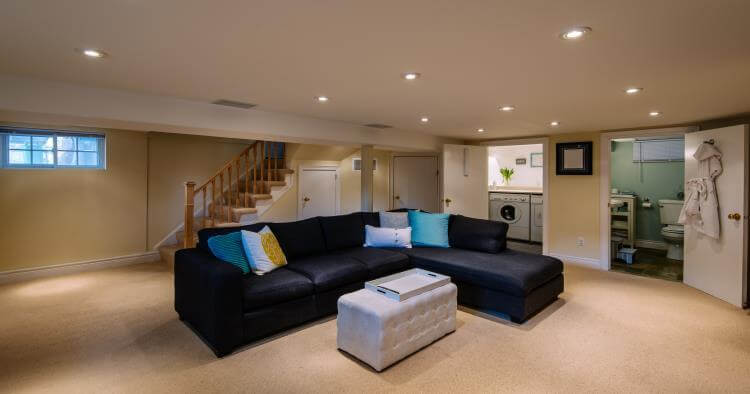5 Ways to Effectively Cool Your Basement

Suppose your basement isn’t currently connected to the central HVAC system. In that case, professional equipment installation will provide more consistent cooling and heating across your entire home – this might be more costly but is often one of the best solutions to keeping it cool.
If you’re tired of uneven temperatures in your home, investing in professional AC installation can be a wise choice to maintain year-round comfort.
1. Ductless mini-split system
Maintaining an ideal temperature in a basement often takes more than just using fans and opening windows; if there’s no ductwork in your basement it can feel muggy and gross.
Installing a ductless mini-split system is another effective solution for keeping cool air in a basement, providing convenient heating solutions without extending their ductwork into the basement, and being economical on your wallet and noiseless and efficient when in operation.
2. Windows, carpets, and dehumidifiers
Cooling down a basement can be challenging because concrete floors absorb heat. Area rugs or carpets can help by keeping floors cooler while decreasing humidity levels in the air.
Additionally, if you have windows in the basement, keeping them covered with drapes or blinds can keep the sunlight out. Blackout curtains also help keep the basement cool by blocking sunlight from entering during the day, available from most major retailers.
This solution helps prevent light from penetrating as much and thus keeps temperatures down in this space.
Also investing in a dehumidifier can also help dry the humid air in your basement. These can be whole-house systems integrated with your HVAC unit, or portable ones. Drier air feels cooler than humid air, so the issue may be more of relative temperature than actual temperature.
3. Portable air conditioners
Portable air conditioners can also help keep a basement cool and comfortable, fitting nicely into windows in most basements and providing multiple fan speeds and dehumidification capabilities for optimal cooling and dehumidification.
These can be easily installed and moved around to suit your preferences and cooling needs.
4. Heat pumps
Heat pumps move heat from one area to another using refrigerant. In cooling mode, heat pumps extract heat from the indoor air and release it outside, effectively cooling the space. They use a compressor, condenser, expansion valve, and evaporator to facilitate this heat transfer.
The refrigerant evaporates and transforms into a gas as a result of absorbing heat from the indoor air. After this, the gas gets compressed, raising the temperature. Finally, the heat is released outside, and the refrigerant condenses back into a liquid, ready to repeat the cycle.
5. Fans
Installing a ductless air conditioning unit may be the ideal way to cool your basement, but this may only sometimes be an option for homeowners. A fan in your basement could help circulate fresh, cool air up toward the upper levels and provide adequate cooling.
To maximize this method, close all windows during the daytime and use a standard fan in the basement to send out cold breezes toward the second-story home. This moves stale warm air up while cycling in fresh cool air into your space – helping make it more relaxed and pleasant!



